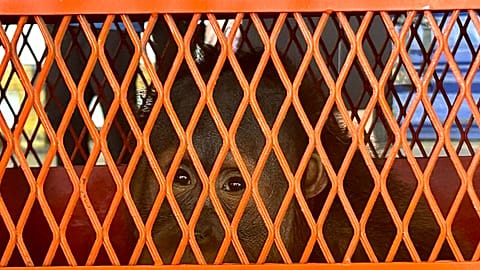Can solar cells work indoors? This tech turns any light into power eliminating need for batteries.
Solar cells that work in low light could help your devices go battery-free.
California-based company Ambient Photonics has been working on indoor solar cells since 2019, improving the performance and price of this emerging technology.
The cells can be ‘printed’ in almost any size and shape for use on everyday devices such as remote controls and wireless keyboards, potentially removing the need for batteries and decreasing the size and weight of electronics.
Devices fitted with Ambient’s latest ‘bifacial cells’, which can harvest light energy from two sides, will be showcased at this week’s Consumer Electronics Show (CES) 2024 in Las Vegas, US. The tech has benefitted from funding from Amazon’s Climate Pledge Fund, which supports green innovations.
How does indoor solar power work?
Drawing on both shaded natural light and artificial light, such as LEDs and halogen bulbs, low-light solar cells are able to turn any light source into power. This allows the embedded cells to continually recharge devices without the need to plug them in.
The tech builds on lowcost dye-sensitised solar cells (DSSCs), which emerged in the 1990s as a way to harvest energy from low-intensity indoor light.
These cells are slower at converting light energy than conventional silicon cells, meaning they are less efficient in direct sunlight. But they are far cheaper to produce and are capable of performing in any indoor light, meaning they’re capable of creating an endless power source for smart devices in homes, offices and other buildings.
“In today’s world, connected electronics require ongoing power, which too often derives from disposable or rechargeable batteries,” said Bates Marshall, Ambient Photonics’ co-founder and CEO.
“Solar power has long been an option for certain low-power electronics like calculators or toys, but it’s taken breakthrough science from Ambient Photonics to develop high-performance solar cell technology for mass-market devices.”
How do bifacial solar cells work?
Made with optically clear glass, Ambient’s new bifacial solar cells can harvest light energy from the back and front side of the cell simultaneously. They can as much as triple the output of conventional silicon cells and increase the output of Ambient’s single-sided cells by 50 per cent.
A device equipped with bifacial cells, such as a remote control, could power-up regardless of whether it is placed face up or down. As the cells boost efficiency and produce more energy, they also enable more powerful electronics.
“Our bifacial solar cell technology is a game-changer for all kinds of devices,” explains Marshall. “We can imagine a host of connected devices, including electronic shelf labels, building sensors and more that not only power themselves more effectively in ambient light, but can also be designed and mounted in a variety of flexible ways and perform regardless of shape or orientation.”
Today, the company announced it is teaming up with Google to release a new solar-powered device - the first of its kind to use the bifacial cells - in 2024.
How could indoor solar help the environment?
Harvesting ambient light power will help electronics manufacturers keep “billions of batteries out of landfills and [allow] companies to minimise carbon emissions,” says Marshall.
The indoor solar cells have already been incorporated into products including remote controls by Universal Electronics and a wireless keyboard by Chicony. The company is also working with electronic paper manufacturer E Ink to integrate them into electronic shelf labels.
Ambient’s California hub is among the world’s largest low-light solar cell manufacturing factories and the first of its kind in the US, capable of producing tens of millions of units a year. The company aims to begin work on a second, US-based smart manufacturing facility in 2025 to meet growing demand for its technology.
“We’re able to provide a revolutionary, sustainable power alternative, as well as a low-emission, intelligent production methodology that satisfies the capacity and price point requirements of the world’s highest-volume electronics,” says Marshall.


















